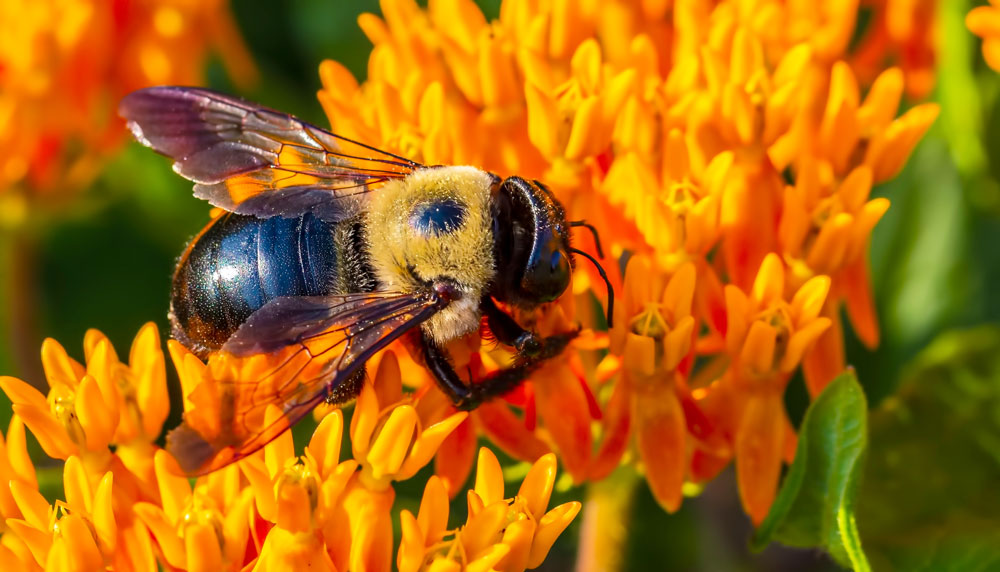Carpenter Bees

Carpenter bees are large, robust insects that look much like bumble bees. They have a bare, shiny black abdomen with some yellow markings. Male carpenter bees, identified by a bright yellow spot in the middle of the head, are aggressive but harmless because they lack stingers. Females can sting if provoked.
Carpenter bees bore holes into wood to create a tunnel in which they raise their young. Adult bees emerge from their overwintering sites in old nest tunnels and mate in the spring. The female prepares a nest by excavating a new site, or more frequently by cleaning out and expanding an existing tunnel. After the nest is ready, the female places a mass of pollen mixed with nectar in the blind end of the tunnel, lays an egg on it, and builds a partition of chewed wood pulp to form a brood cell. Six to eight brood cells are constructed in each tunnel. The bee larvae develop on the pollen and emerge as adults 30 to 40 days later. There is one generation per year.
Treatment for carpenter bees should be performed at the first sign of them, usually in February. The suggested product is a liquid concentrate that can be sprayed in and around the holes. The residual will not only kill adult bees but also the larvae as they emerge.
If you have any questions about carpenter bees, suggested products, or application instructions, please visit your nearest Pestop location.

